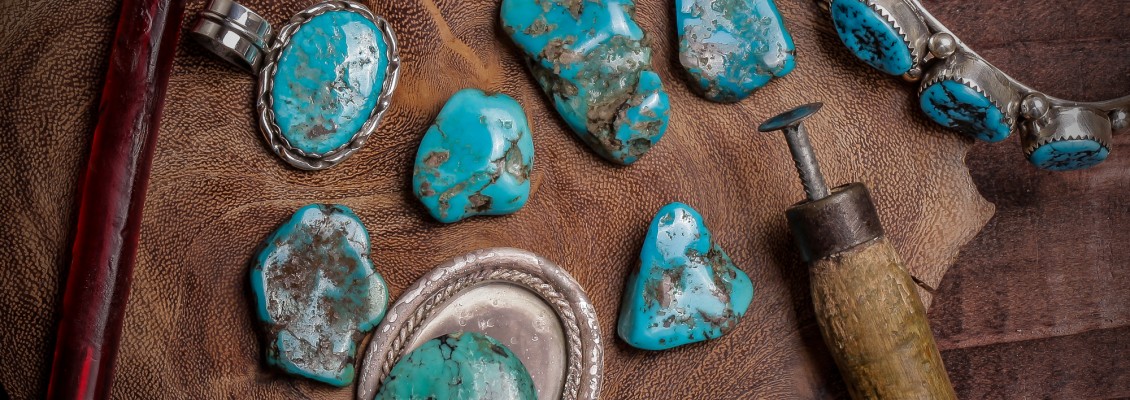Aug 21


1 Comment(s)
5759 View(s)

How to Authenticate Genuine Turquoise
Turquoise
- Turquoise: this mineral is formed by a foundation of copper, then water, aluminum and phosphorus joins the crowd. Once all these elements are together turquoise can form. Differing amounts of these elements will change the overall properties of turquoise. Color can range from vibrant blue to green to brownish green. MOHS hardness of turquoise ranges from 4.5 - 6. It is very rare to find turquoise with perfectly uniform and evenly distributed color.
- Test for rough natural piece of turquoise - run your fingernail along the surface of the stone. If your nail gets caught where the turquoise meets the webbing then it’s a good indication of natural turquoise.
- Tap it on your teeth (Caution: This can damage or break your teeth if done incorrectly). Turquoise has a dull density when you tap it on your teeth. If the stone in questions feels too much like plastic (dull soft) or glass (sharp dense) to your teeth, be sure to know what you are buying. Try familiarizing with real turquoise, amber and quartz. Amber will tap and feel like plastic or resin. Quartz will feel like glass.
Look for color inconsistencies. Turquoise does have variegations in color, BUT dyed stones will have telltale lines, where the dye has collected in the natural cracks of the stone. - Turquoise is generally stable to light, but high heat can cause discoloration and surface damage. It dissolves slowly in hydrochloric acid, and it can be discolored by chemicals, cosmetics, and even skin oils or perspiration.
- It’s safe to clean turquoise jewelry with warm, soapy water, but it should never be cleaned with steam or ultrasonic cleaners. Some turquoise is treated to improve its surface appearance. Heat or solvents can damage the treated surfaces.
Turquoise definitions:
-
Block turquoise: “Block turquoise” is a mixture of chemicals, plastic resin, and dyes that produce blocks. This type of product contains no turquoise. Iron pyrite is sometimes in use as “matrix”
-
Color enhanced turquoise” “Color enhanced” simply means that the turquoise has a dye treatment.
-
Enhanced turquoise: “Enhanced turquoise” refers to medium-grade turquoise that has been treatment by a process that penetrates and hardens the turquoise with vaporized quartz. As a result, this process will not work on low-grade “chalk” turquoise. The process will only work on relatively hard turquoise. Turquoise enhancement is commonly undetectable using normal testing methods.
-
Imitation and simulated turquoise: Stones such as howlite, magnesite and dolomite may contain dye to look like turquoise. Glass, plastic, ceramic and ploymer clay may also be in use to imitate turquoise.
-
Reconstituted turquoise: “Reconstituted” turquoise consists of small pieces of turquoise chalk powder mixed with dye and plastic binder. Turquoise dealers refer to this type of turquoise as “block”. “Reconstitute” is another label for fake turquoise.
-
Stabilized turquoise: “stabilized” turquoise is treated with a plastic resin to make it harder. In addition, stabilizing allows genuine, but lower-grade turquoise, to be made into jewelry. Even when a stone goes through stabilization, it color can change over time by human oils, soap and skin lotion.
-
Wax-treated turquoise: Instead of plastic resin, wax is used to stabilize turquoise. Chinese turquoise often has wax impregnation. Wax typically only affects the surface of the stone.
Author: Rosalie Talahongva
Tribal Affiliation: Hopi
© LomaSiiva™ Compliance Library
Showing 1 to 1 of 1 (1 Pages)






1 Comment(s)
Amazing jewels, especially the bracelets. In love!
Leave a Comment